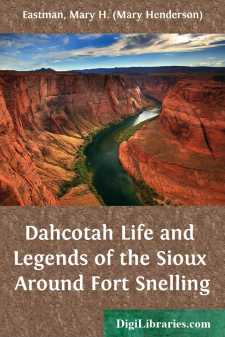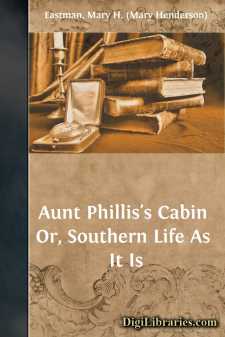Categories
- Antiques & Collectibles 13
- Architecture 36
- Art 48
- Bibles 22
- Biography & Autobiography 813
- Body, Mind & Spirit 142
- Business & Economics 28
- Children's Books 15
- Children's Fiction 12
- Computers 4
- Cooking 94
- Crafts & Hobbies 4
- Drama 346
- Education 46
- Family & Relationships 57
- Fiction 11828
- Games 19
- Gardening 17
- Health & Fitness 34
- History 1377
- House & Home 1
- Humor 147
- Juvenile Fiction 1873
- Juvenile Nonfiction 202
- Language Arts & Disciplines 88
- Law 16
- Literary Collections 686
- Literary Criticism 179
- Mathematics 13
- Medical 41
- Music 40
- Nature 179
- Non-Classifiable 1768
- Performing Arts 7
- Periodicals 1453
- Philosophy 64
- Photography 2
- Poetry 896
- Political Science 203
- Psychology 42
- Reference 154
- Religion 513
- Science 126
- Self-Help 84
- Social Science 81
- Sports & Recreation 34
- Study Aids 3
- Technology & Engineering 59
- Transportation 23
- Travel 463
- True Crime 29
Mary H. (Mary Henderson) Eastman
Mary Henderson Eastman (1818–1887) was an American writer known for her works defending slavery and her depictions of Native American life. Her most notable book, "Aunt Phillis's Cabin" (1852), was a pro-slavery novel written in response to Harriet Beecher Stowe's "Uncle Tom's Cabin." Eastman also wrote "Dacotah, or Life and Legends of the Sioux Around Fort Snelling" (1849), which offered romanticized portrayals of Native American life based on her experiences at Fort Snelling, Minnesota. Her writings contributed to the national debate on slavery and reflected the tensions between Northern abolitionism and Southern pro-slavery sentiments.
Author's Books:
Sort by:
I. SIOUX CEREMONIES, SCALP DANCE, &c. The Sioux occupy a country from the Mississippi river to some point west of the Missouri, and from the Chippewa tribe on the north, to the Winnebago on the south; the whole extent being about nine hundred miles long by four hundred in breadth. Dahcotah is the proper name of this once powerful tribe of Indians. The term Sioux is not recognized, except among...
more...
CHAPTER I. There would be little to strike the eye of a traveler accustomed to picturesque scenes, on approaching the small town of L——. Like most of the settlements in Virginia, the irregularity of the streets and the want of similarity in the houses would give an unfavorable first impression. The old Episcopal church, standing at the entrance of the town, could not fail to be attractive from its...
more...



